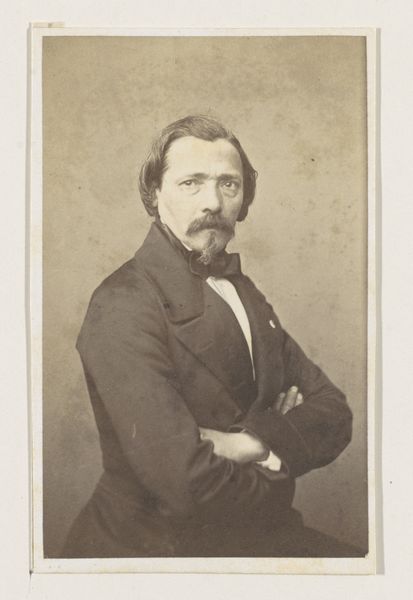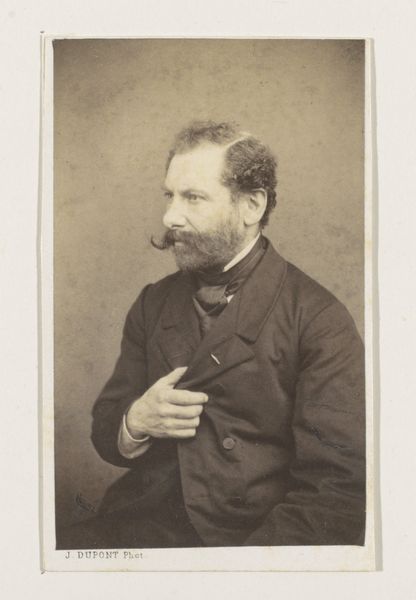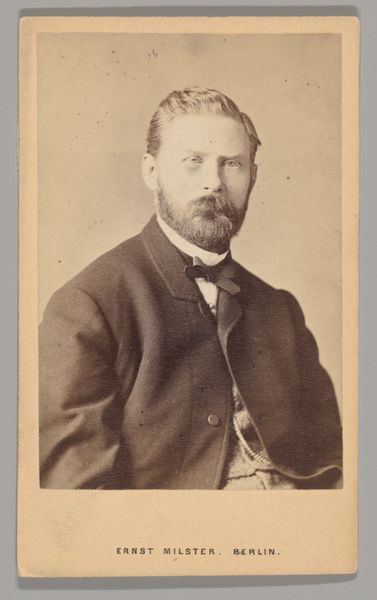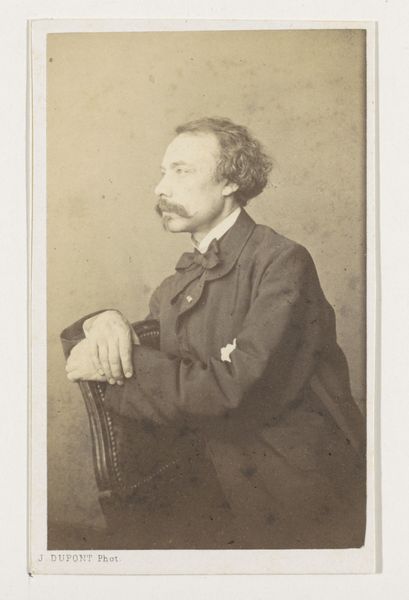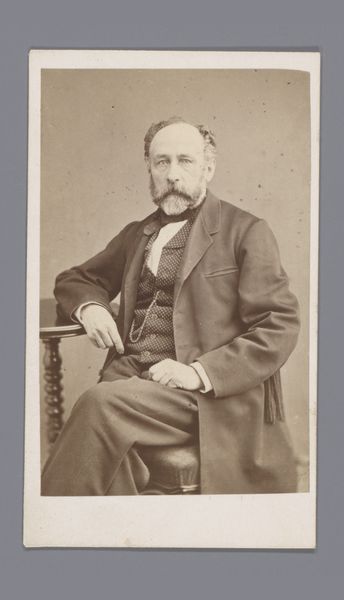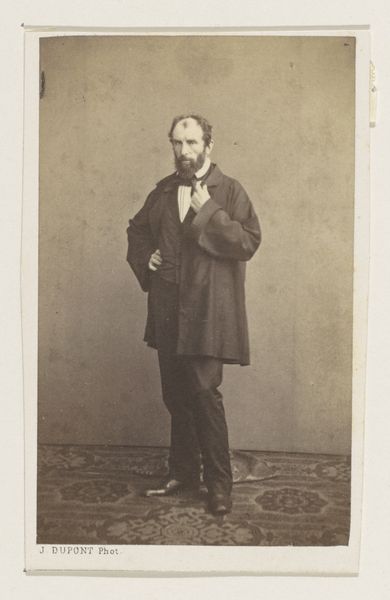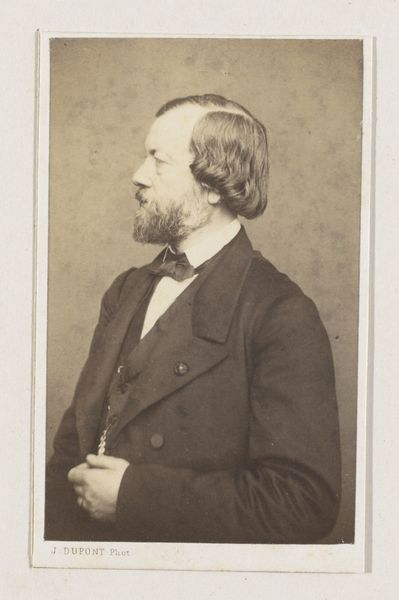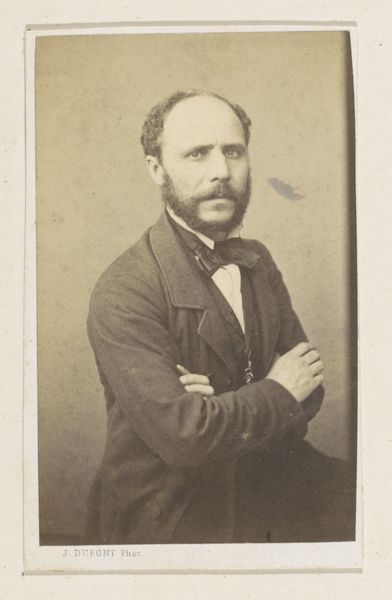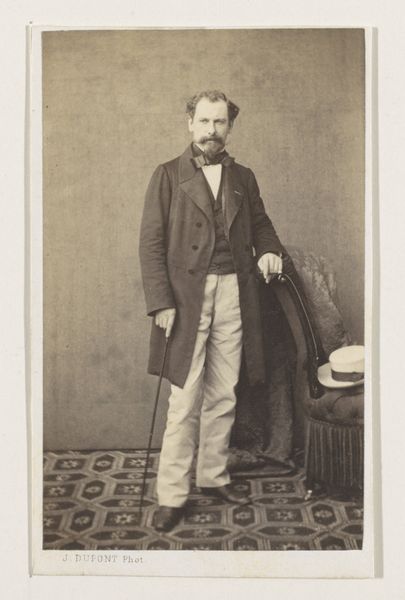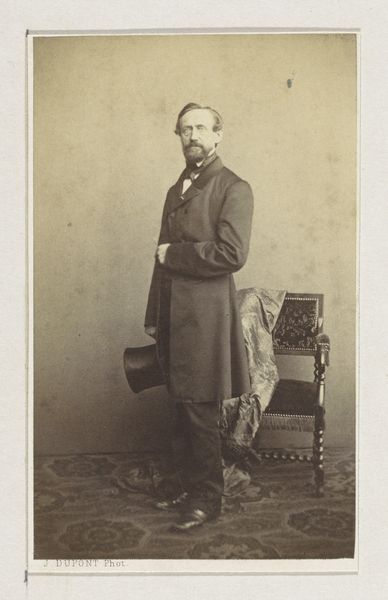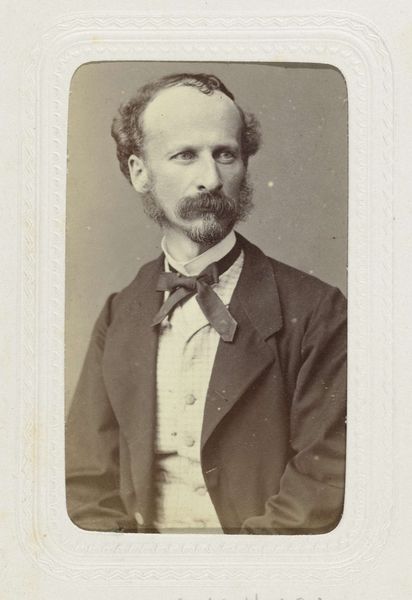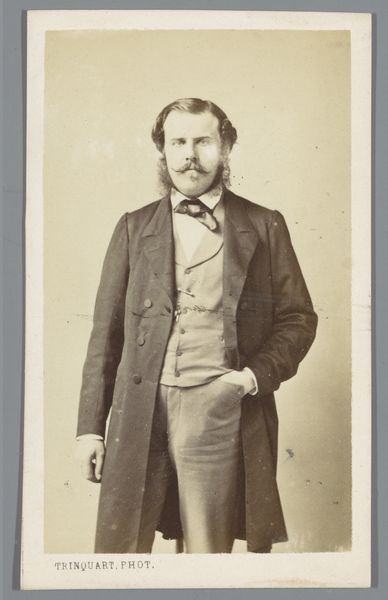
Dimensions: height 101 mm, width 62 mm
Copyright: Rijks Museum: Open Domain
Editor: Here we have Joseph Dupont’s 1861 daguerreotype, “Portret van de schilder Gustave Louis Marie Pieron, halffiguur," or "Portrait of the painter Gustave Louis Marie Pieron, Half-Figure.” The subject's gaze is so intense and, well, masculine. What can you tell us about its cultural context? Curator: Dupont's portrait invites us to consider the intersection of art, identity, and emerging technologies in 19th-century Europe. This daguerreotype, while seemingly a straightforward depiction of Pieron, exists within a matrix of social codes and artistic ambitions. The "masculine" gaze, as you termed it, is a performance, isn’t it? How does this staged masculinity reflect broader anxieties and power dynamics of the era? Editor: I hadn't thought about it as performance, but now that you mention it, it really does seem posed, somehow. How might we read the social commentary of something as simple as his pose? Curator: Well, consider that the photographic portrait democratized image-making, previously restricted to the wealthy. Artists like Pieron could cultivate a specific public image. His clothing, his bearing – what story is he telling about himself, and what are the implications for those excluded from that narrative? How does the photographic medium itself reinforce or subvert these power dynamics? Editor: That's a very good point; I see how photography can both democratize and create new forms of exclusion simultaneously. It certainly gives me a new perspective. Curator: Precisely! And this image, beyond its aesthetic qualities, becomes a document, a tool, a potential site of resistance or affirmation, depending on who's holding the lens and whose story gets told. Editor: I’m walking away with a whole new appreciation for the depth and complexity of this portrait. Thanks so much!
Comments
No comments
Be the first to comment and join the conversation on the ultimate creative platform.

